Is it possible to do a polynomial regression line on a scatter() in matplotlib?
This is my graph: https://i.stack.imgur.com/3ra9x.jpg
alg_n = [1, 1, 1, 2, 2, 2, 3, 3, 3, 4, 4, 4...]
orig_hc_runtime = [0.01, 0.02, 0.03, 0.04, 0.04, 0.04, 0.05, 0.09...]
plt.scatter(alg_n, orig_hc_runtime, label="Orig HC", color="b", s=4)
plt.scatter(alg_n, mod_hc_runtime, label="Mod HC", color="c", s=4)
...
x_values = [x for x in range(5, n_init+2, 2)]
y_values = [y for y in range(0, 10, 2)]
plt.xlabel("Number of Queens")
plt.ylabel("Time (sec)")
plt.title("Algorithm Performance: Time")
plt.xticks(x_values)
plt.yticks(y_values)
plt.grid(linewidth="1", color="white")
plt.legend()
plt.show()
Is it possible to have regression lines for eat data set? If so, can you please explain how I can do it.

